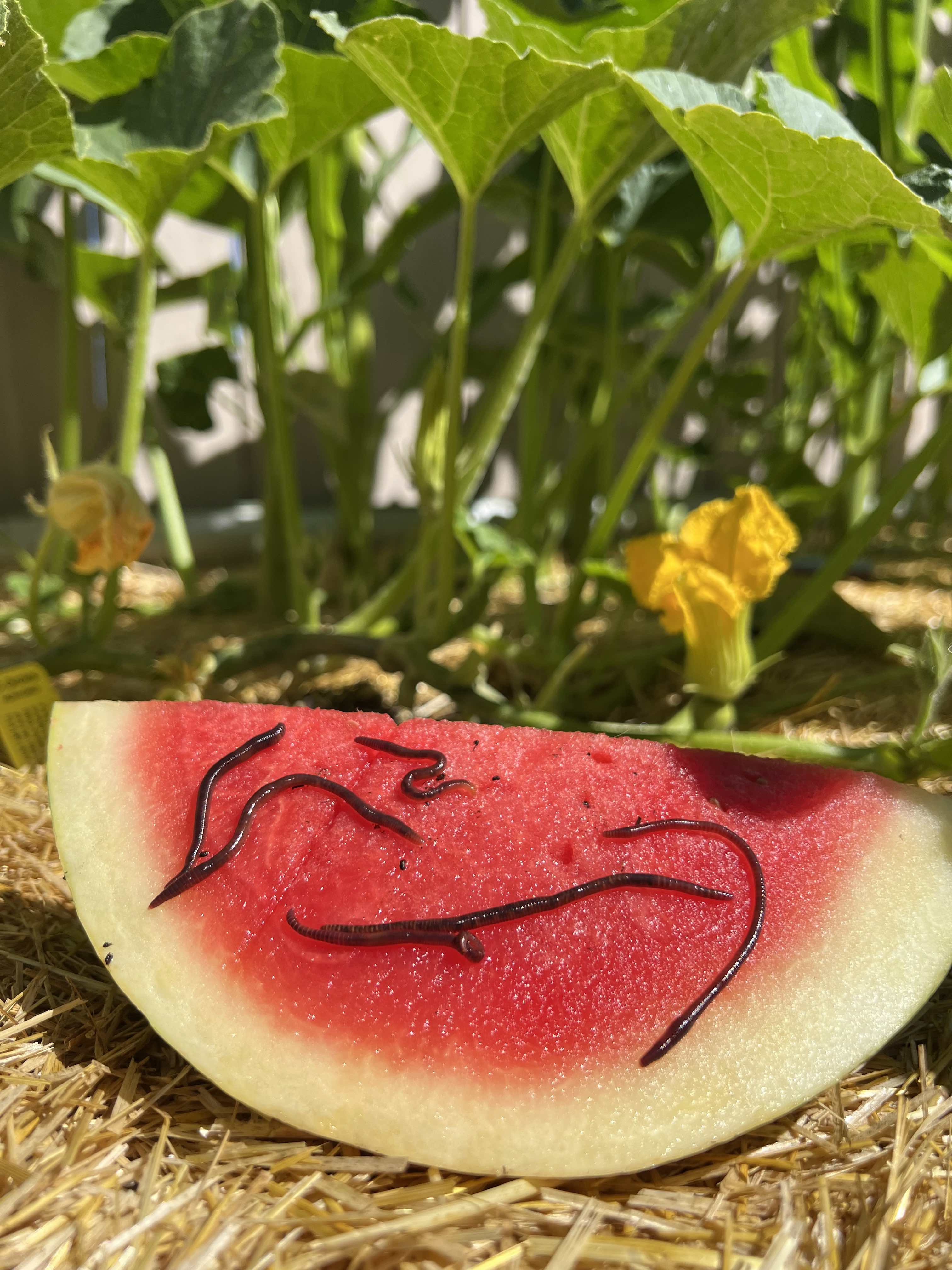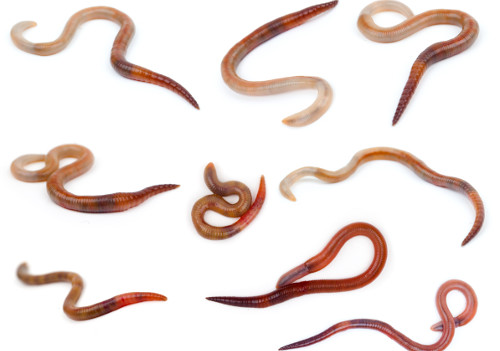Organic Composting with Red Wiggler Worms - Increase Your Yard's Growth
Organic Composting with Red Wiggler Worms - Increase Your Yard's Growth
Blog Article
Optimizing the Benefits of Red Wiggler Worms: A Comprehensive Handbook for Home Gardeners and Urban Farmers
In the world of sustainable horticulture practices, red wiggler worms stand as unsung heroes, quietly transforming organic waste into nutrient-rich castings that can work wonders for dirt health. As home gardeners and city farmers significantly seek cost-effective and environmentally pleasant ways to boost their gardens, the potential advantages of using the power of red wigglers can not be overstated. From decreasing cooking area waste to cultivating healthier plants, the utilization of these modest animals uses a plethora of advantages. By exploring the ins and outs of just how to efficiently take care of and maximize the benefits of red wiggler worms, people can unlock a wide range of opportunities for enhancing the sustainability and performance of their horticulture endeavors.
Understanding Red Wiggler Worms
Red Wiggler worms, renowned for their reliable composting capacities, are a varieties of earthworms extensively made use of in vermiculture techniques. These worms, scientifically understood as Eisenia fetida, prosper in rotting organic material, making them suitable prospects for composting (Red Wiggler Worms). Red Wigglers are starved eaters, efficient in eating their own weight in natural waste daily. Their digestive system process breaks down natural matter into nutrient-rich castings, which are an important resource for enhancing dirt and promoting plant growth.
One key attribute of Red Wiggler worms is their reproductive price. These hermaphroditic animals possess both male and women reproductive organs, permitting them to replicate rapidly under desirable problems. A mature Red Wiggler can generate several offspring in a short duration, guaranteeing a constant populace within a composting system.

Setting Up a Worm Bin
When establishing a worm bin for vermiculture functions, proper preparation and focus to detail are necessary for developing a favorable setting for Red Wiggler worms. Begin by selecting an ideal container for your worm container.

Location the worm bin in a trendy, dark location far from direct sunlight and extreme temperature levels. Consistently check the dampness levels, adding water if the bedding feels flaky or completely dry. Feed the worms a well balanced diet plan of vegetables and fruit scraps, staying clear of citrus fruits, onions, and spicy foods. By adhering to these steps, you can establish a thriving worm bin that will effectively refine organic waste right into nutrient-rich vermicompost for your yard.
Feeding and Preserving Worms
Making sure a well balanced and nourishing diet plan is critical for the health and productivity of Red Wiggler worms in a vermiculture system. Red Wigglers are starved eaters, capable of consuming their own body weight in raw material daily. To keep a successful worm population, it is important to offer them with a selection of food scraps such as vegetables and fruit peels, coffee grounds, tea bags, and crushed eggshells. It is crucial to prevent feeding them citrus fruits, onions, garlic, milk items, meat, and oily foods as these can be hazardous to the worms or trigger unpleasant smells in the container.
Proper dampness degrees visit this site right here are likewise essential for the wellness of Red Wiggler worms. The bed linens needs to feel like a moist sponge, offering sufficient dampness for the worms to breathe via their skin. Routinely inspect the dampness levels and adjust by adding water or dry bed linen product as required. Additionally, preserving correct temperature level problems in between 55-77 ° F(13-25 ° C )will make sure ideal worm activity and recreation. By faithfully monitoring their diet plan, Read Full Report dampness, and environmental conditions, home gardeners and city farmers can sustain a healthy and balanced and effective Red Wiggler worm populace for composting functions.
Harvesting Worm Spreadings
To effectively draw out nutrient-rich worm castings from the vermicompost, a methodical harvesting process is vital for making best use of the composting benefits. Red Wiggler Worms. The initial step in gathering worm spreadings is to encourage the worms to move to one side of the bin. This can be attained by placing fresh food scraps on one side and leaving the various other side uninterrupted for a couple of days. Once the majority of worms have actually dodged with fresh food, the castings can be collected from the contrary side.
After the spreadings have been gathered, it is essential to separate any remaining worms from the castings to avoid harming them throughout storage or application. One effective approach is to develop cone-shaped piles of castings under bright light. Worms will intuitively relocate far from the light, enabling very easy splitting up and removal.
Finally, the harvested worm spreadings must be stored in an awesome, dark, and dry location to maintain their quality and effectiveness as a nutrient-rich dirt modification. By adhering to these actions, home garden enthusiasts and urban farmers can make best use of the advantages of red wiggler worms in their vermicomposting systems.
Making Use Of Worm Castings in Gardening
The incorporation of nutrient-rich worm castings into visit the site yard soil can significantly improve plant growth and general soil health and wellness. Worm castings, also known as vermicast, are a natural fertilizer generated by red wiggler worms as they damage down natural issue. These spreadings are rich in important nutrients like nitrogen, phosphorus, potassium, and helpful microbes that advertise plant development and improve soil framework.
When using worm castings in horticulture, it is important to mix them completely into the dirt or utilize them as a leading dressing around plants. The slow-release nature of worm castings ensures a steady supply of nutrients to plants with time, decreasing the danger of nutrient leaching and promoting long-lasting dirt fertility. Furthermore, worm spreadings help enhance soil oygenation, water retention, and microbial activity, producing a healthy and balanced atmosphere for plant origins to grow.

Final Thought
In verdict, the utilization of red wiggler worms in home horticulture and metropolitan farming can substantially benefit soil health and wellness and plant development. By recognizing how to set up and keep a worm container, feed the worms effectively, and collect their nutrient-rich castings, garden enthusiasts can maximize the advantages of these earthworms.
In the world of lasting horticulture practices, red wiggler worms stand as unhonored heroes, quietly transforming organic waste right into nutrient-rich spreadings that can function marvels for soil health.When developing a worm container for vermiculture purposes, correct prep work and attention to information are vital for producing a favorable setting for Red Wiggler worms. The first step in gathering worm castings is to motivate the worms to move to one side of the container. Worm spreadings, likewise known as vermicast, are a natural plant food generated by red wiggler worms as they damage down organic matter. By understanding exactly how to set up and maintain a worm container, feed the worms correctly, and collect their nutrient-rich spreadings, gardeners can make best use of the benefits of these earthworms.
Report this page